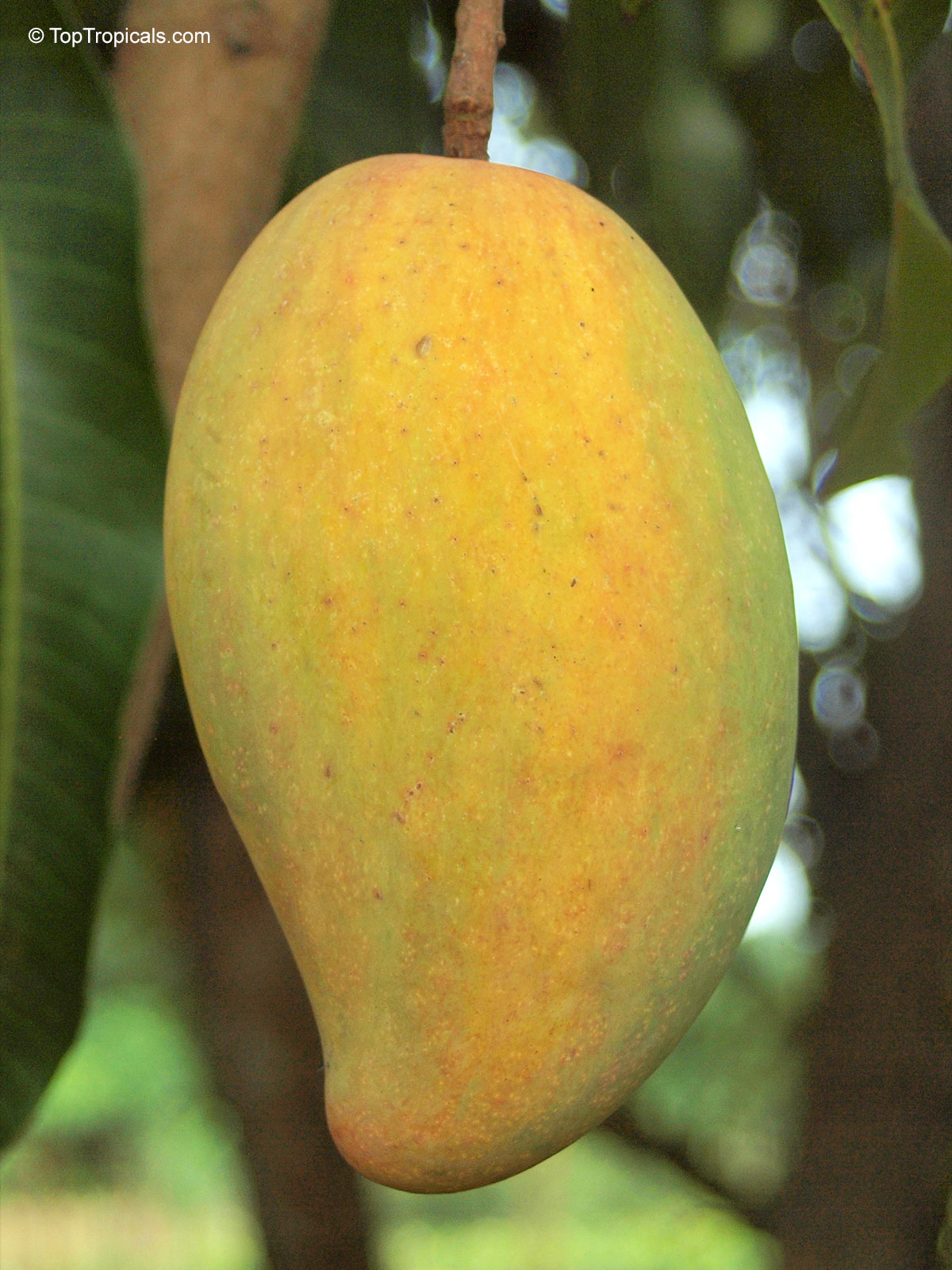Mangifera indica 'Manilita' (Manilita Mango)
Top Tropicals Plant Encyclopedia
Botanical name: Mangifera indica
Common name: Manilita Mango
Family: Anacardiaceae
Origin: South Asia and India
Hardiness: 30°F






Mangifera indica (Mango) is a large evergreen tree native to South Asia and among the oldest cultivated fruit trees, grown in India for over 4,000 years. In tropical climates it can reach 60-80 feet with a broad crown of glossy leaves. Small yellowish flowers appear in spring, followed by fleshy drupes known worldwide as mangoes.
Fruit shape varies from oval to kidney-shaped, with skin that may remain green or ripen to yellow, orange, or red. The flesh is juicy and aromatic, sometimes fiberless and sweet, sometimes more resinous depending on type. Mangoes are eaten fresh, dried, blended, or cooked, making them one of the most versatile tropical fruits. Some people experience irritation on the lips from the peel, so fruits are usually eaten peeled.
The tree thrives in full sun and well-drained soil in warm climates, hardy only to USDA Zones 9-11. With hundreds of named cultivars, Mangifera indica remains one of the world s most widely grown and culturally important fruit trees.
See Mango varieties.
The Manilita mango is a compact Mexican selection derived from the Manila type along the Pacific Coast of Mexico. It is prized for its early ripening, attractive color, and excellent flavor. The tree is naturally dwarf, typically growing only about 6 feet tall with a 4-5 foot spread, and it stays neat and rounded, making it ideal for containers, patios, or small gardens. It is also disease-resistant and moderately tolerant to salt and brief cool spells, performing well in coastal or subtropical locations.
The fruit is small and elongated, averaging about 9 ounces. The skin shows a warm golden yellow color with greenish areas and scattered tiny orange-red speckles. The flesh is light yellow, silky-smooth, and completely fiber-free, with a sweet, uncomplicated flavor. The fruits ripen very early, often among the first mangoes of the season in Florida, and are excellent for eating fresh, slicing, or drying. The variety grows well in USDA Zones 10-11 and tolerates short drops into the 30F but should be protected from frost.
Related cultivars: Mangifera indica 'Manilita' (Manilita Mango)
- Mangifera indica Alampur Baneshan ''Alampur Baneshan'' (Alampur Baneshan Mango)
- Mangifera indica Alphonso ''Alphonso'' (Alphonso Mango)
- Mangifera indica Baileys Marvel ''Baileys Marvel'' (Baileys Marvel Mango)
- Mangifera indica Beverly ''Beverly'' (Beverly Mango)
- Mangifera indica Bombay ''Bombay'' (Bombay Mango)
- Mangifera indica Cac ''Cac'' (Cac Mango)
- Mangifera indica Carabao ''Carabao'' (Carabao Mango)
- Mangifera indica Carrie ''Carrie'' (Carrie Mango)
- Mangifera indica Choc Anon ''Choc Anon'' (Choc Anon Mango)
- Mangifera indica Coconut Cream ''Coconut Cream'' (Coconut Cream Mango)
